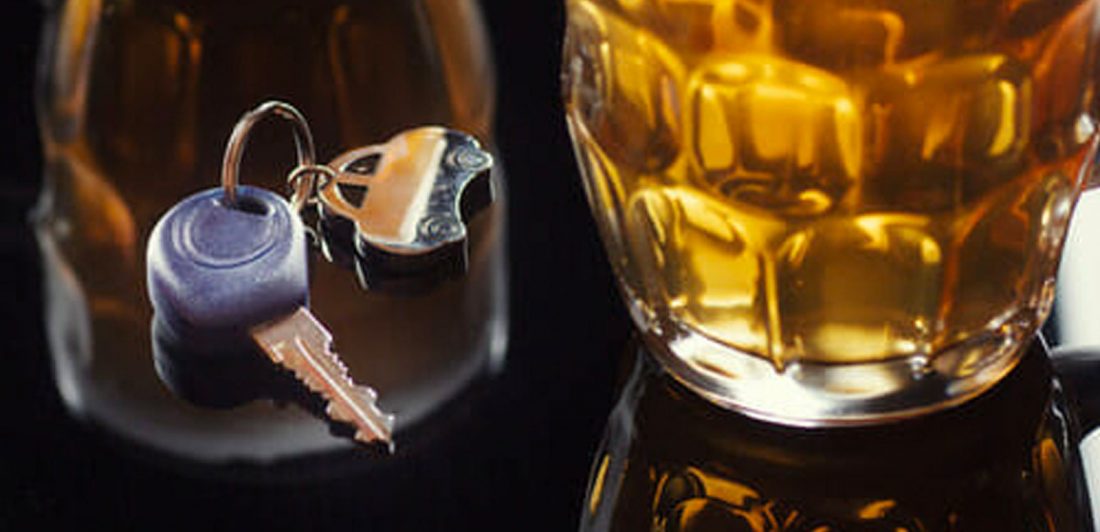In January 2016, the National Transportation Safety Board put out its 2016 Most Wanted List. On that list was a new threshold that the board wants states to adopt for driving impairment: .05% blood alcohol concentration (BAC). Some states are taking heed to this suggestion and moving forward with legislation proposing the lowered BAC limit. In fact, on December 30, 2018, Utah became the first state to enact legislation lowering the blood alcohol concentration limit to .05. So far, it is the only state with a BAC limit lower than the .08 federal standard.
However, Utah may not be alone in lowering its BAC limit for very long. Recently, bills in Michigan and California have been introduced to lower each respective state’s BAC. Several other states have attempted to pass such legislation, but nothing came of those bills. States have the right to set the limit lower in the interest of public safety. However, if the BAC moves in the other direction, states risk losing federal grants.
Lower BAC limits have drawn support from prevention groups like Mother’s Against Drunk Driving and the National Safety Council.
What does blood alcohol concentration limit mean?
Blood alcohol concentration is the metric used to measure alcohol intoxication for both legal and medical purposes. In essence, the BAC measures the amount of alcohol in a person’s blood. For example, a BAC of .10% means that a person’s blood supply contains one-part alcohol for every 1000 part of blood.
Obviously, there is a correlation between the amount of alcohol in a person’s blood and their level of impairment. It is for this reason that BAC is used as the marker for whether or not a person is breaking the law by operating a motor vehicle after alcohol consumption.
How is BAC measured?
A motorist stopped on suspicion of drunk driving will likely have to undergo testing by a police officer. In addition to observation and field sobriety tests, officers have other tools to determine a person’s level of impairment.
Breath tests
Breath tests can be conducted by police officers on the spot. Breathalyzers don’t require medical personnel and the results are instant. These are handheld devices that guess a person’s BAC by measure the amount of alcohol on a person’s breath. There are three different types of breathalyzers that deploy different methods of measuring BAC.
Urine tests
Urine tests are far less accurate than breath and blood tests. They are typically only used when other tests are not available. Studies show that urine tests can swing significantly higher or lower than the actual BAC in the subject’s blood.
Blood tests
A person’s blood alcohol concentration level can also be tested through a blood test. A driver must consent to a blood test. Officers will take a person to a lab or the hospital to have a blood sample drawn. These tests are generally more accurate than breath and urine tests.
How was the .08% BAC standard set?
It may be hard to believe, but prior to 2000, the permissible BAC limit was .10%. Former President Bill Clinton issued a directive on October 23, 2000, that set the nationwide standard for BAC at .08%. This isn’t some arbitrary number. It was set based on scientific evidence that at .08, drivers become impaired and unable to properly complete basic driving tasks like:
- Braking
- Steering
- Lane changing
- Judgment
- Dual focus attention
While a person becomes impaired with each drink they ingest, at .08 impairment increases rapidly and significantly affects judgment and reaction times. In fact, independent studies from the U.S. indicate that lowering the illegal BAC limit from .1 to .08 resulted in a 5-16% reduction in alcohol-related crashes, fatalities, and injuries.
How many drinks does it take to reach .05?
A person’s BAC is affected by several factors. BAC factors include:
- Weight
- Height
- Age
- Gender
- Time of last meal
- Number of drinks within a window of time
- Size of the drinks
- Medications
- Type of mix
- Tolerance
- Mood
- Fatigue
For an average-sized man, more than two standard drinks in the first hour and a little more than one drink each hour thereafter lead to a .05 BAC. Women do not have as much as the enzyme dehydrogenase, which helps break down alcohol in the stomach. As a result, women tend to have higher BAC levels than men even when drinking the same amount of alcohol.
You can check out the virtual bar from Responsibility.org to enter your specific information for an idea of how many drinks it takes to hit your state’s BAC limits.
The case for lowering federal BAC standards to .05
A 2013 Safety Report from the National Transportation Safety Board (NTSB) recommended the National Highway Traffic Safety Administration (NHTSA) support BAC limits of .05 or lower.
Supporters say that at .05, driving skills become severely degraded. For example, studies indicate a correlation in the decrease in the number of alcohol-related fatalities with the lower BAC limit. In fact, these studies suggest that driving function declines begin at relatively low BACs. They also suggest that most drivers become significantly impaired by .05 BAC. Further, the relative risk of a crash for a driver with a BAC between .05 to .07 is 4 to 10 times greater than a driver with .00.
Ultimately, lowering BAC limits serves as a general deterrent to drinking and driving. Advocates of the BAC drop say that by lowering the limit, it’s one step closer to getting the number of people who drink and drive closer to zero. Many believe that lowering the BAC standard is one way to get there.
A lower BAC doesn’t necessarily mean there will be more arrests. The hope is that a lower BAC promotes behavioral change. For example, instead of three drinks at dinner, a person may opt for two.
There are currently about 100 countries that have BAC levels of .05 or lower. According to the National Transportation Safety Board, the average consumption of alcohol is the same or higher than in the United States, however, these countries have far lower alcohol-related crash deaths.
What do opponents of lowering BAC say?
Opponents of a .05 BAC say the lowered BAC limit is overkill. In addition, they believe that a stricter BAC targets the wrong group of drinkers. The problem drinkers typically aren’t moderate drinkers who have a glass of wine over dinner. They contend that the real danger comes from seriously intoxicated drivers.
For example, according to the National Highway Transportation Safety Agency, 70 percent of drunk-driving fatalities are caused by drivers with BAC levels of .15 or higher. Opponents believe that targeting high BAC drivers and repeat offenders would be a better use of resources.
Supporters and opponents of lower BAC levels offer conflicting statistics about the effects of alcohol. For example, opponents point to a study that says a 120-pound woman can hit .05 with one drink and 160-pound man can hit that number in two drinks. Given the significant social, professional and financial consequences of DWIs or DUIs, opponents wonder if it is worth ruining someone’s like because they had a drink or two over dinner.
To lower or not to lower?
Both sides of the .05 BAC debate offer compelling arguments. While we don’t want to see anyone dealing with the harsh penalties of a DWI/DUI, there is a social responsibility we all carry to avoid drinking and driving. Alcohol impairs your decision-making abilities—including recognizing if you’ve had too much to drink to safely operate a vehicle.
At .05, a person operating a vehicle is doing so with:
- Reduced coordination
- Diminished ability to track objects
- Difficulty steering
- Reduced response to emergency situations
No amount of alcohol pairs well with driving. In fact, most states have catch-all laws that can hold you accountable for drinking then driving even if you are not at illegal limits, but are dangerously impaired. It’s 2019! We are lucky enough to live in an era where we no longer have to depend on a bartender to call us a cab. With a few swipes on a smartphone, a car can pick you and your friends up from your favorite bar or restaurant within minutes.
The Carlson Law Firm Cares About Public Safety
Drunk driving is responsible for nearly 30 percent of fatal auto crashes. We have a societal responsibility to do all that we can to reduce the number of deaths related to drunk driving.
As personal injury attorneys, we have represented thousands of clients injured in alcohol-related crashes. Injuries sustained from drunk driving crashes are some of the most severe injuries we see. Our firm has the tools and resources to help victims pursue maximum compensation and get the justice they deserve.
Carlson Law Firm attorneys have a successful history of holding drunk driving perpetrators accountable. Contact us today to schedule a free case evaluation.





